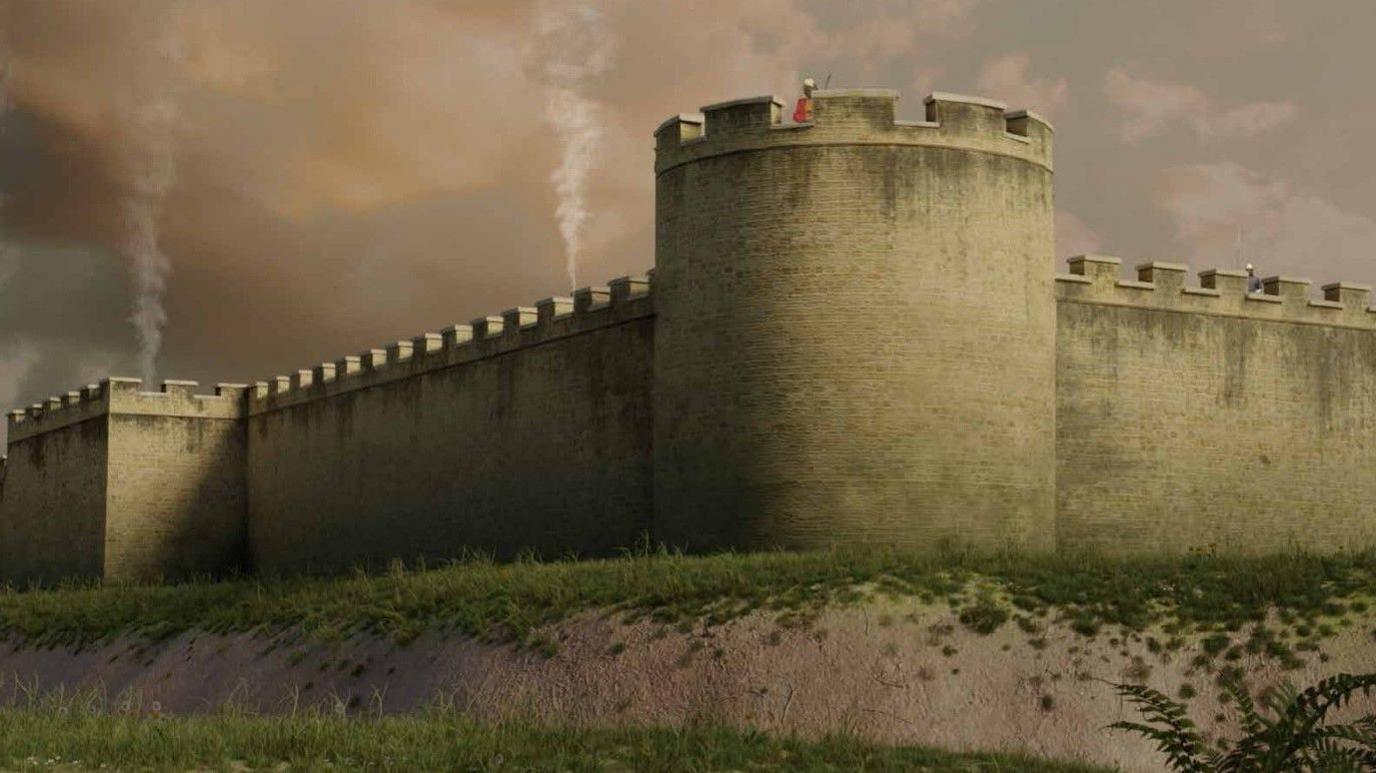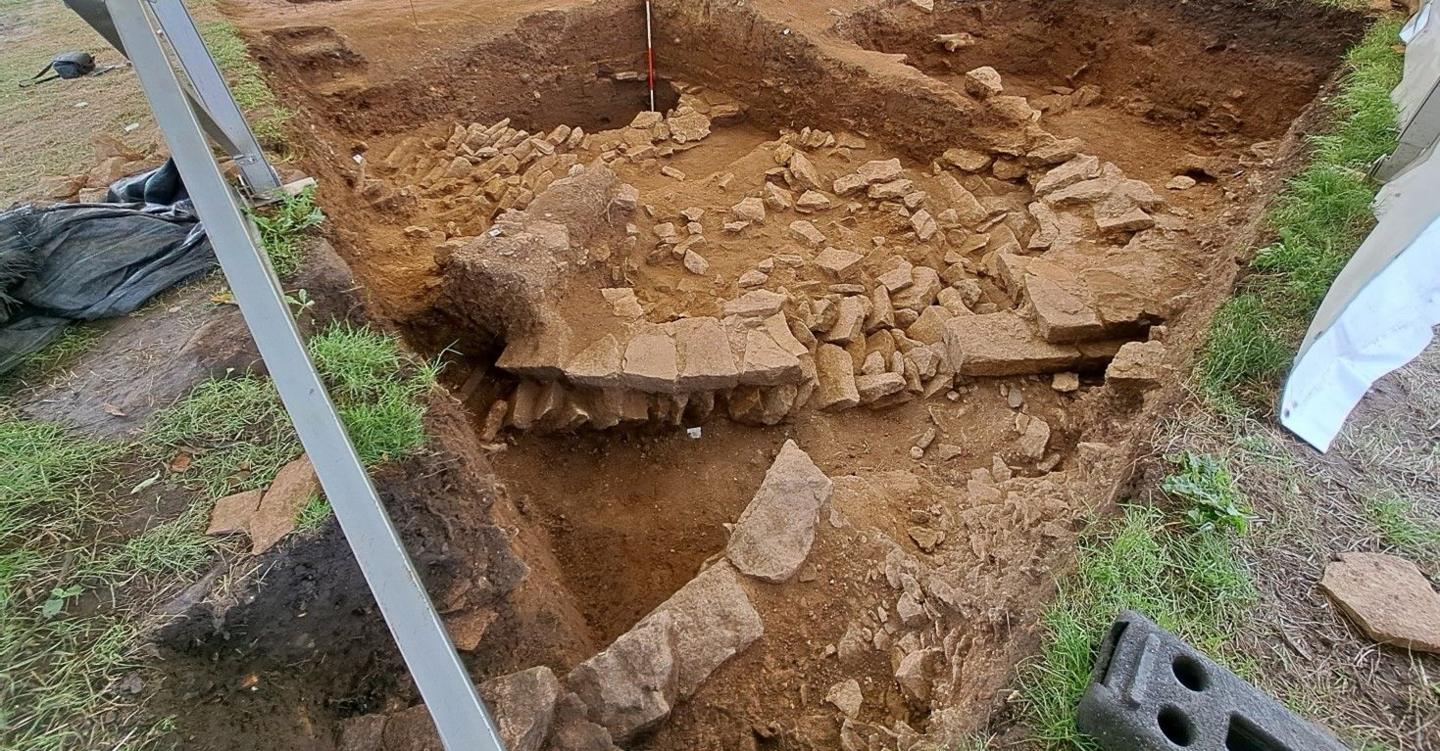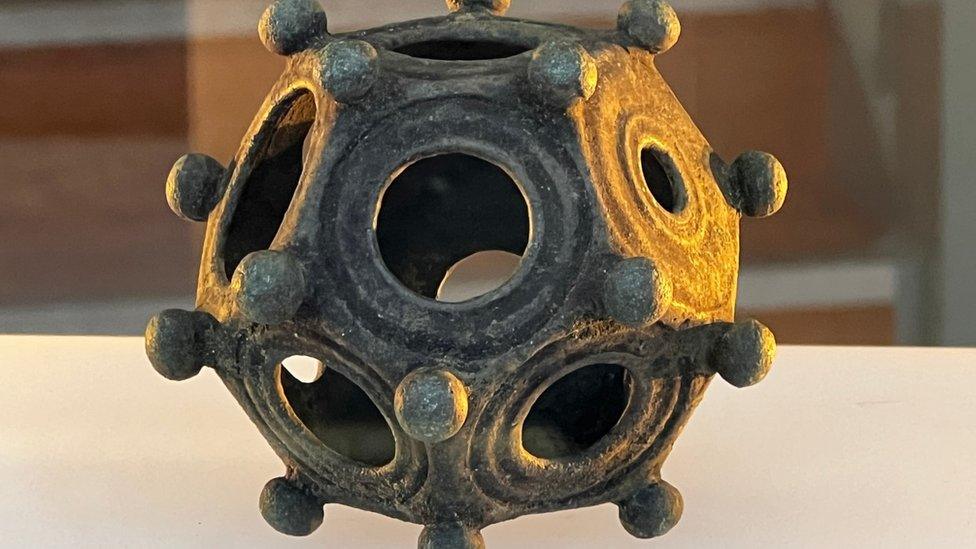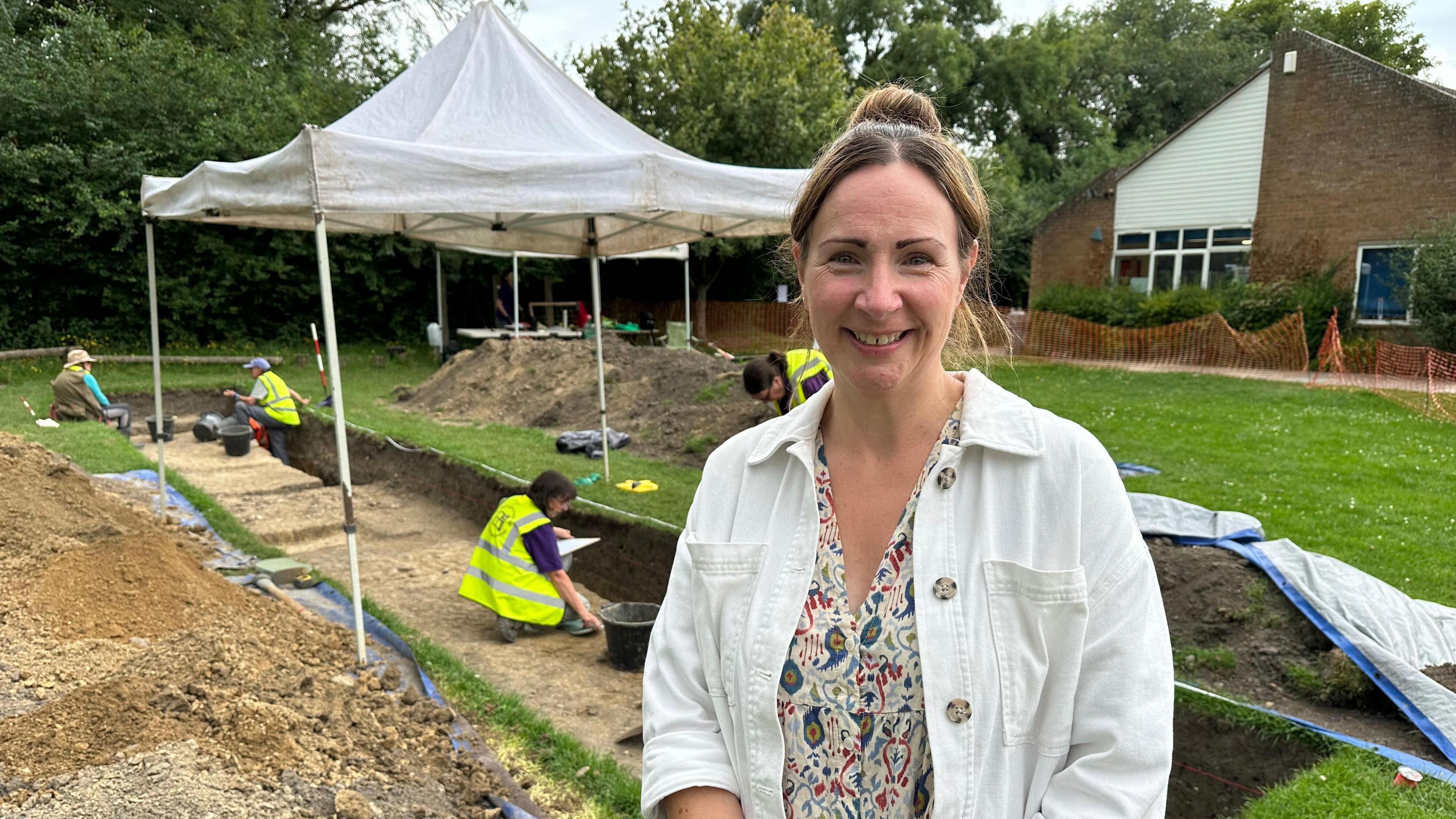Dig sheds light on Roman history of town

A new image by graphic designer Mark Hoyle showing how the fortifications of Roman Petuaria, now the town of Brough, may have looked
- Published
Archaeologists have shed new light on the Roman history of an East Yorkshire town.
A team working on a dig in Brough have uncovered evidence that fortifications were strengthened in the late 3rd Century, at a time when Britain was ruled by "rebel" emperors.
An artist's impression has been created to demonstrate the scale of the Roman fort, which was known as Petuaria and protected a major Roman centre.
The Petuaria ReVisited Project, which is leading the excavations, will be holding a open event on Sunday, from 10:00 to 16:00 BST. Visitors will be able to tour the site, view finds and take part in family activities.
Archeology not aerospace
Martin Credland, Petuaria ReVisited project lead, said the open day would be an opportunity to see the latest development, with tours and talks explaining the recent finds.
He said: "On our tours, anyone can come down and we'll show them around the site, we'll explain what we've found this year and in previous years, and how this all comes together to tell the story of Petuaria."
Mr Credland said he first became interested in the project as he was keen to change the focus on Brough away from aerospace and onto archaeology instead.
More than 100 volunteers, many new to archaeology, are taking part in the dig.
They are investigating the Roman defences at Burrs playing field, as well as a Roman road in an adjacent garden.
Mr Credland said anyone could get involved, and described the volunteers who help excavate the site as "diverse in every way".
He said people who take part "learn new skills, meet new people, and develop a new interest" - as well as enjoying time spent outdoors.
"It's really nice to excavate. Our volunteers might find a piece of pottery or a ring made of brass or bone - but it's interesting to think of the romance behind that. Someone was wearing and lost that ring around 2,000 years ago," he said.
Breakaway emperors
Brough is thought to be on the site of the tribal capital of the Parisi, who lived in eastern Yorkshire during the Roman period.
The Roman walls have been known about since the 1930s, but digs in recent years have led to new discoveries.
An external tower, or bastion, found in 2023, resembles similar examples in Roman London, as well as those of the Saxon Shore forts, which were built to protect the south and east coasts of Roman Britain from raiders.
In the late 3rd Century, a commander called Carausius attempted to break away from Rome and declared himself emperor in Britain. He was assassinated in the year 293 by an ally called Allectus, who ruled for a further three years.

A bastion of the Roman fortress was discovered in 2023
A permanent display panel is now situated at the playing field, providing information about the discoveries. It has been funded with a government shared prosperity grant.
Geophysical surveys and excavations have shown many buildings lie under the field.
A grant from the Hull Maritime Project has also enabled surveys in gardens along Cave Road, which have revealed Roman buildings possibly associated with a small port at the edge of the tidal inlet.
The Petuaria ReVisited Project is run by the Elloughton Brough Playing Field Association in collaboration with the East Riding Archaeological Society.
Follow BBC East Yorkshire on Facebook, external, X (formerly Twitter), external and Instagram, external. Send your story ideas to eastyorkslincs.news@bbc.co.uk, external
Related topics
- Published29 April 2024

- Published24 July 2024
